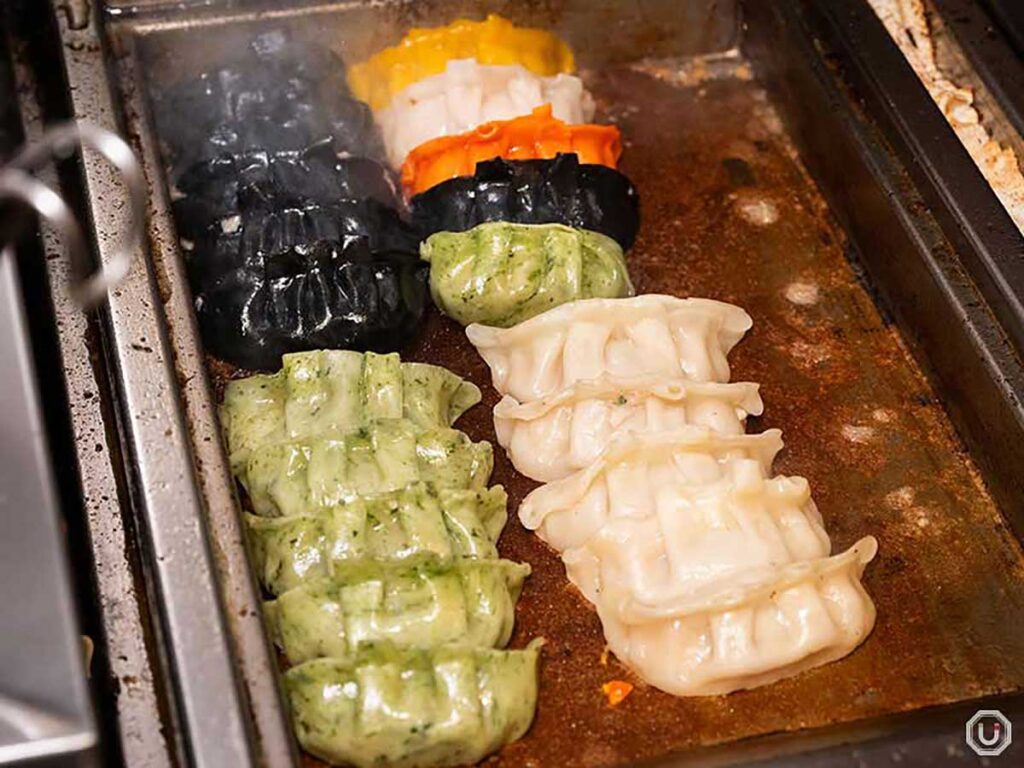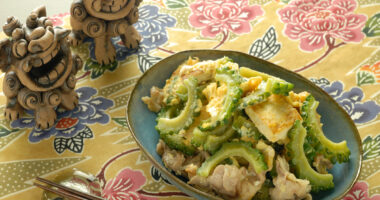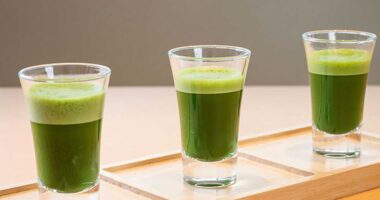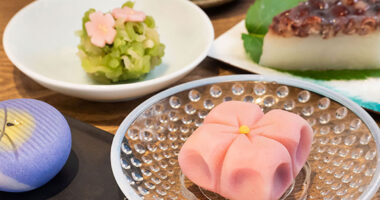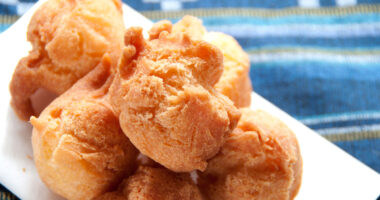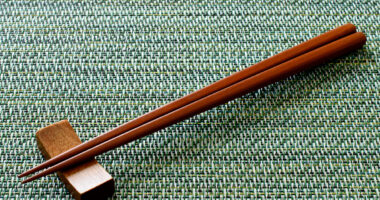Gyōza are one of Japan’s most beloved Chinese-style dishes.
These dumplings are made by wrapping pork and vegetables in a thin wheat-flour skin, then pan-frying or steaming. Their toasty aroma and juicy bite win people over everywhere. Though the dish began in China, it has evolved uniquely in Japan and is now enjoyed from home kitchens to specialty shops. In particular, pan-fried gyoza have become a distinctly Japanese style, with a crisp surface and a juicy center.
This article explains gyoza’s history, main types and features, and how to enjoy them when visiting Japan.
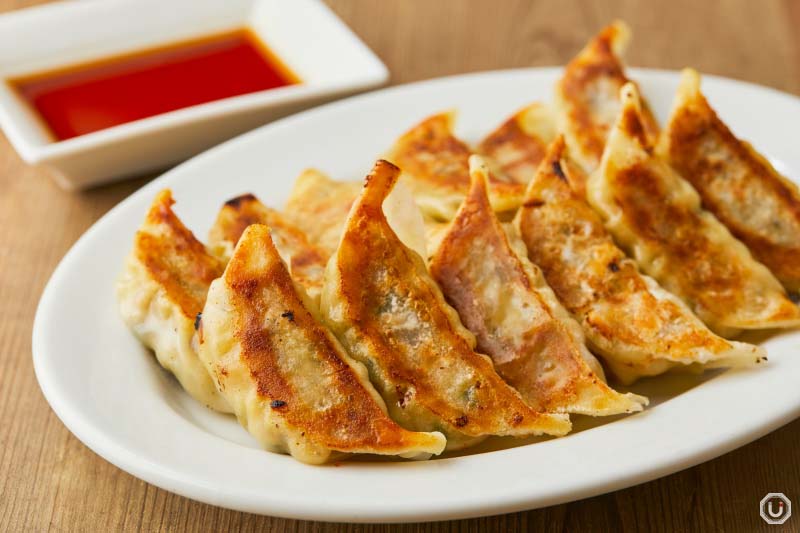
Vegetable Gyoza at “T’s TANTAN ecute Ueno”
Origins and history of gyoza
Gyoza’s history is very old, with roots tracing back to China and perhaps even Mesopotamia. In China, dishes resembling gyoza are said to have existed for about 1,800 years, developing as foods that wrap meat or vegetables in a wheat-flour dough. This gyoza culture later spread worldwide and evolved independently in many countries.
Introduction to Japan and postwar spread
Japan’s gyoza culture took off in earnest after World War II. Japanese soldiers returning from China missed the gyoza they had eaten there and began recreating them at home. Methods from Manchuria (northeastern China) were especially influential at first; combined with Japanese ingredients and techniques, they led to today’s Japanese-style gyoza.
From the 1950s into the 1960s, gyoza began appearing at specialty and Chinese restaurants and gradually spread to ordinary households. Centered especially on the Kanto region, pan-fried gyoza became the mainstream style in Japan and are now a signature dish nationwide.
Types and cooking methods
In Japan, gyoza can be broadly grouped into four styles by cooking method. Each has its own texture and flavor, and the settings where they are served also vary. Knowing these differences helps you enjoy gyoza culture more deeply.
Yaki-gyōza (“pan-fried gyoza”)
Yaki-gyoza are the most common style in Japan, defined by a crackly, fragrant surface and a juicy interior. They use a pan-fry-then-steam method (the same technique used for Chinese ‘potstickers’): sear one side, then add water and cover to steam-fry. This yields a golden, crisp bottom and a soft, fluffy top.
At home and at specialty shops alike, yaki-gyoza are hugely popular. At places that focus on the craft, cooks fine-tune heat and steaming time to achieve their ideal texture.
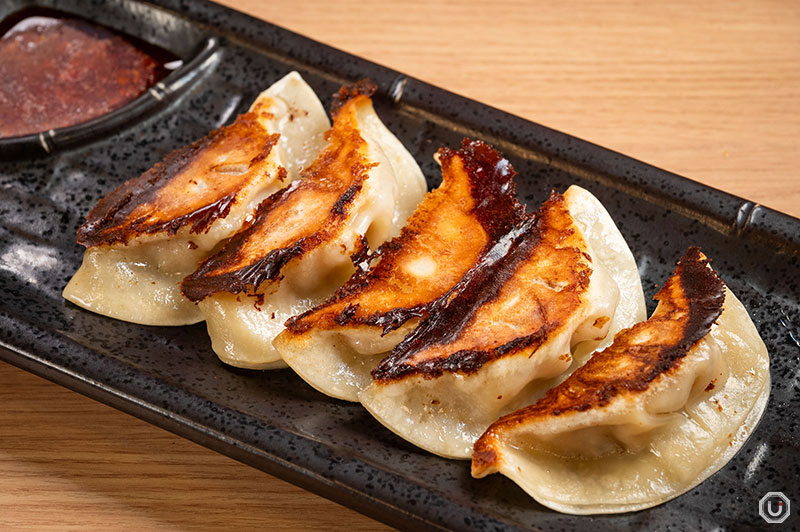
Yaki Gyoza at “SANKYU HALAL JAPANESE FOOD”
Boiled gyoza and mushi-gyōza (“steamed gyoza”)
Steamed gyoza are close to traditional Chinese methods: finished in a steamer, their skins are tender and the filling’s flavor comes through gently and directly. Boiled gyoza are cooked in water and often served in soup, a favorite in cold weather.
These methods let you enjoy gyoza’s inherent flavors and are common at Chinese restaurants and dim sum specialists. The skins stay softer, the seasoning feels milder, and the appeal differs from pan-fried versions.
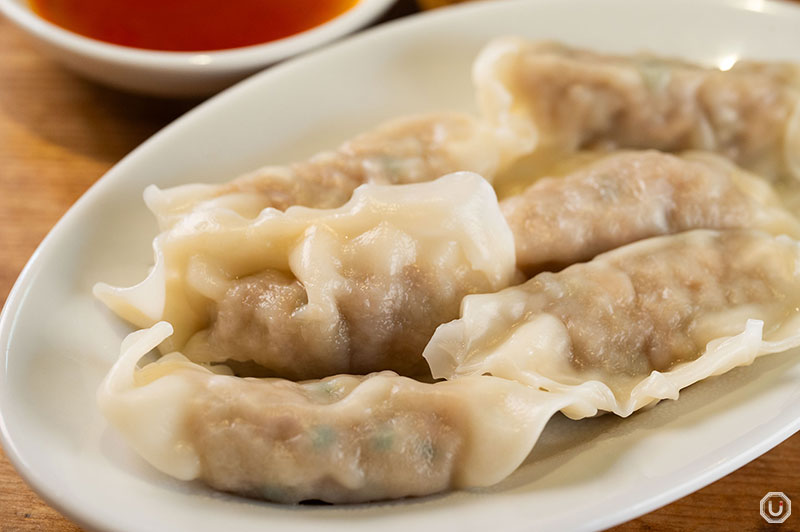
“Addicting Gyoza Dumplings (6 Pieces)” served boiled at “Souryutougyokudo Roppongi” (choice of grilled, fried or boiled)
Age-gyōza (“deep-fried gyoza”)
Age-gyoza are fried in oil for an all-over crunch. They are often served as snacks at izakaya and Chinese restaurants and pair perfectly with beer. Compared with everyday styles, they are more aromatic and satisfying.
You’ll frequently find age-gyoza on drinking menus, where their crisp bite and toasty aroma make them a crowd-pleasing appetizer.
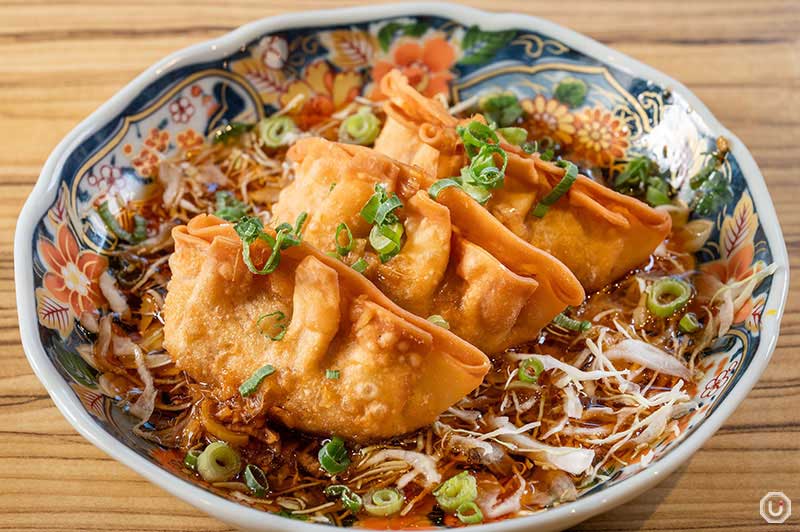
“Yurin Gyoza,” age-gyoza arranged yóulínjī style, at “Shinjuku Kakekomi Gyoza”
Fillings and variations
Japanese gyoza range from classic combinations to creative modern takes. From traditional flavors to contemporary twists, there is a wide spectrum to explore, each with its own appeal.
Core filling combination
The standard Japanese filling combines pork, cabbage, garlic chives, garlic, and ginger. Pork’s juiciness, cabbage’s sweetness, the aroma of chives, and the punch of garlic strike a balance that appeals to many diners. This classic mix is used everywhere from home kitchens to specialty shops.
The wrapper is crucial, too: thin, pliant skins encase the filling and produce different textures depending on the cooking method. Thickness and feel vary by shop and region, giving each a distinct character.
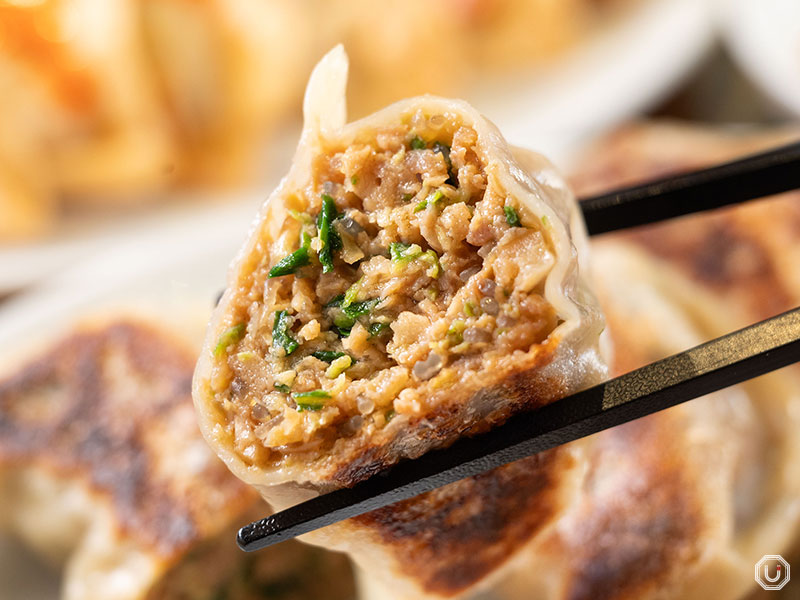
“Large Gyoza Dumplings” filled with cabbage and garlic chives at “Souryutougyokudo Roppongi”
Creative gyoza and local riffs
In recent years, alongside the classics, many creative gyoza have appeared.
Shiso gyoza feature the refreshing flavor of perilla leaves, while kimchi gyoza offer Korean-style heat. Skins also vary—some shops knead ginger or black sesame into the dough for pan-fried gyoza that are especially enticing.
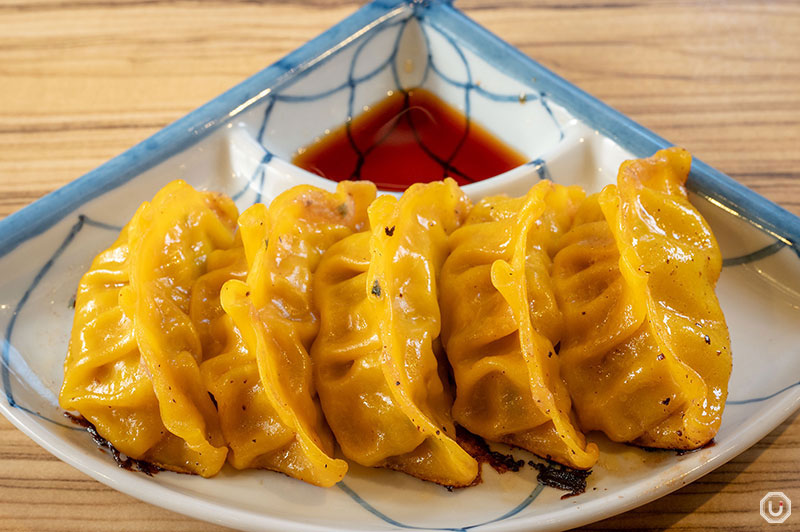
Ginger Gyoza at “Shinjuku Kakekomi Gyoza”
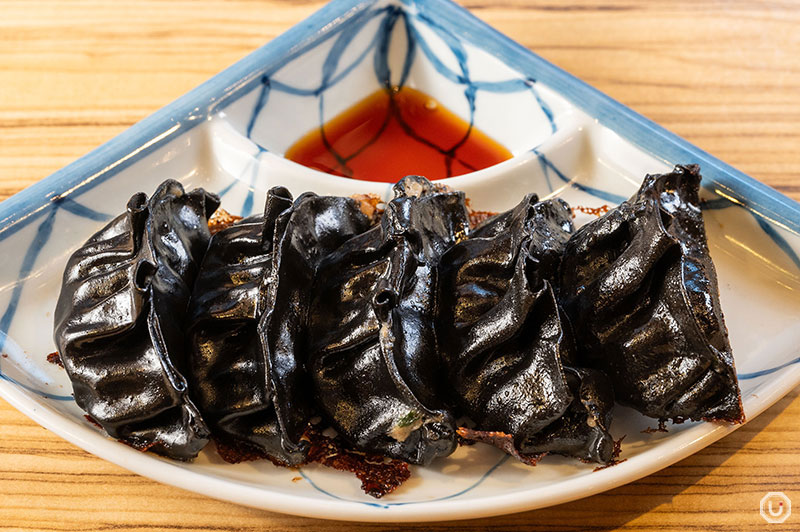
Black Pepper Kakekomi Gyoza at “Shinjuku Kakekomi Gyoza”
Cheese gyoza bring a Western note and are especially popular with younger diners. These creative styles reflect the growing diversity of Japan’s gyoza culture.
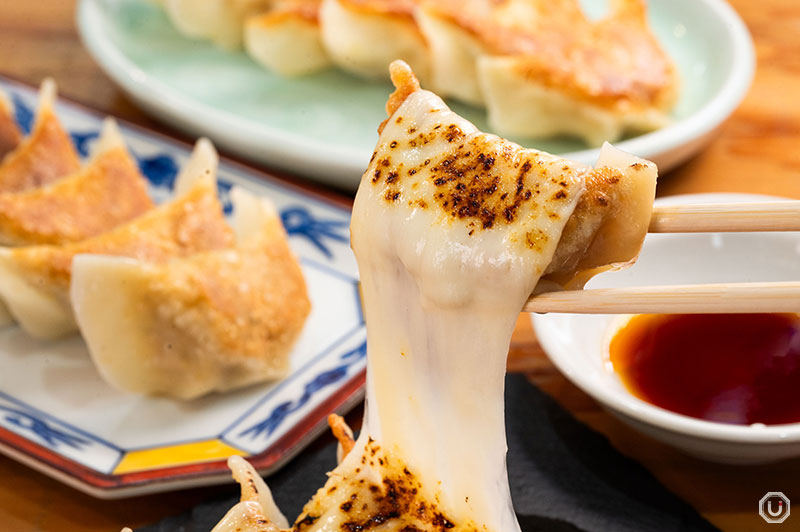
Cheese Pork Shoulder Gyoza at “KITTAN GYOZA”
There are also versions with chicken, beef, or shrimp, as well as all-vegetable gyoza.
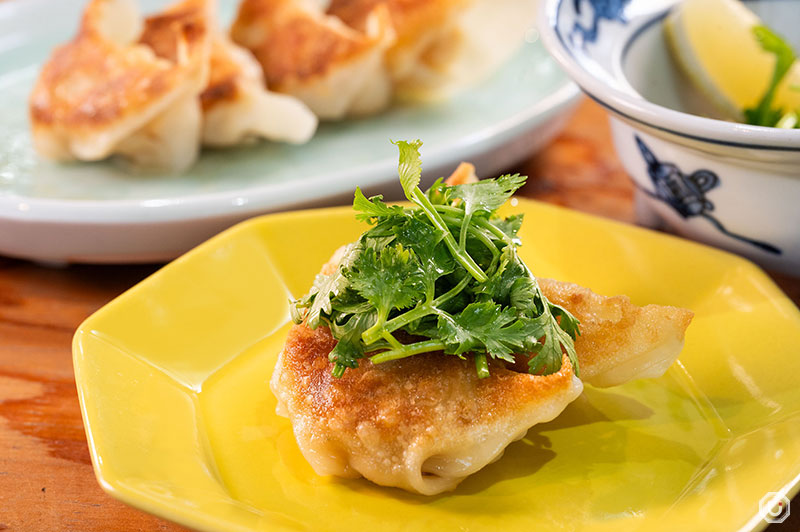
“Shrimp Gyoza à la carte” with cilantro at “KITTAN GYOZA”
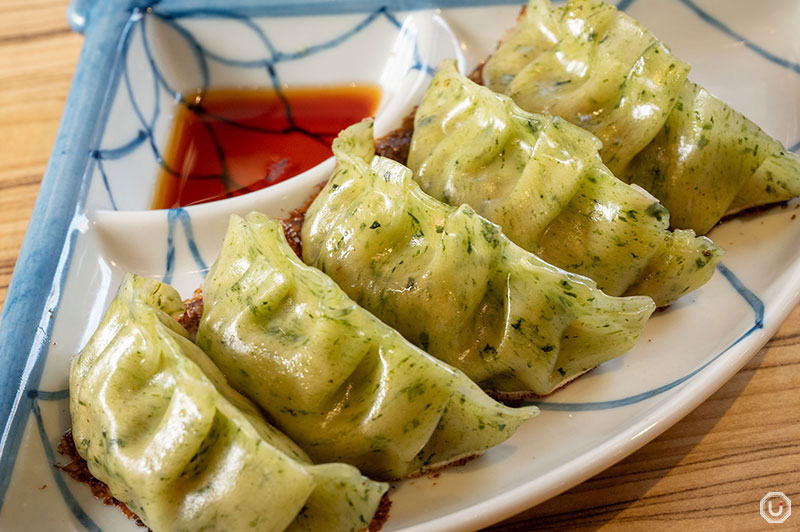
Vegetarian Gyoza at “Shinjuku Kakekomi Gyoza”
Together, these styles form a uniquely Japanese fusion of Chinese cooking with local tastes.
Regional gyoza cultures
Utsunomiya gyoza (Tochigi Prefecture) and Hamamatsu gyoza (Shizuoka Prefecture) often trade places for the highest annual gyoza consumption in Japan. The Hamamatsu style is noted for its generous use of cabbage. They’re cooked in a ring with bean sprouts in the center—an original style popular at home and at local events.
Hakata gyoza (Fukuoka Prefecture) are typically small, one-bite pieces seared crisp, served mainly at izakaya and ramen shops. Their bolder flavor pairs well with drinks, and a culture of enjoying them with alcohol is well established.
These local styles build on regional ingredients and methods, making “gyoza trips” a delicious way to explore Japan.
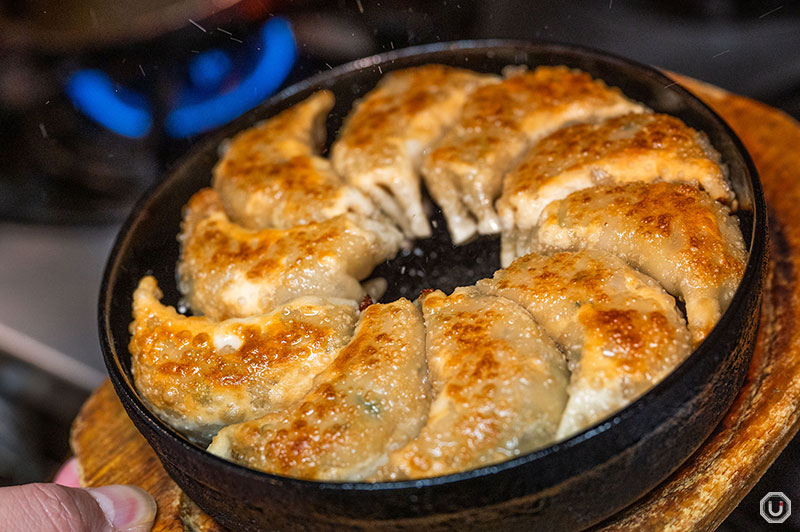
“Hakata Iron Plate Gyoza (large size, 10 pieces)” at “Kyūshū Nechūya Ueno LIVE”
How to eat and enjoy gyoza
To enjoy gyoza at their best, it helps to know how to eat them and how to use the dipping sauce. Japan has developed its own ways of eating gyoza; understanding them deepens the experience.
Dipping sauce and condiments
In Japan, the standard dip is a mix of soy sauce, vinegar, and chili oil.
This blend heightens savoriness while keeping the finish bright. Soy sauce adds saltiness, vinegar brings acidity, and chili oil contributes heat and aroma—an ideal balance that enriches gyoza’s flavor.
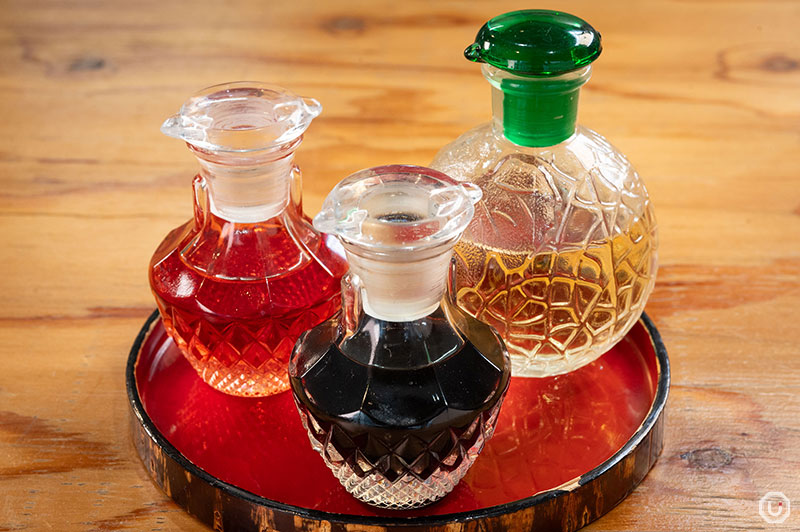
Blend the complementary soy sauce, vinegar, and chili oil for your dip at “KITTAN GYOZA”
Ratios are up to you—more chili oil for heat, or extra vinegar for a lighter taste. Customizing the mix is part of Japan’s gyoza culture.
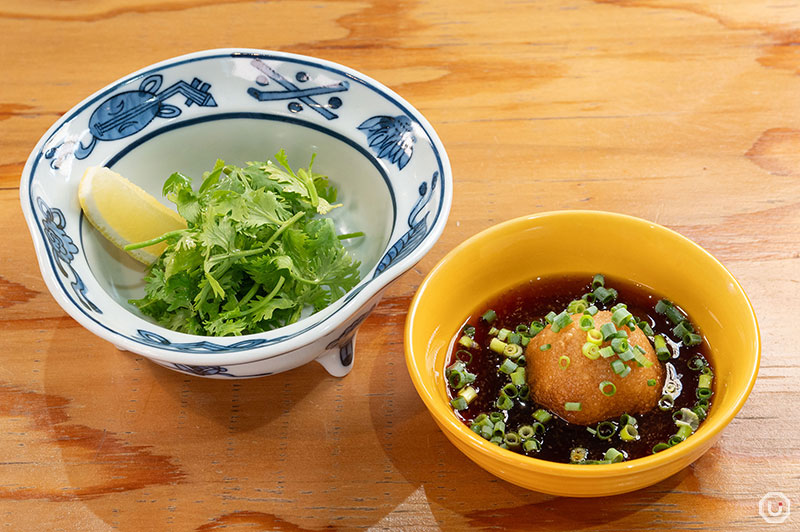
Optional gyoza toppings at “KITTAN GYOZA” include (left) coriander and (right) grated daikon with ponzu (both sold separately).
Where gyoza are served and dining occasions
Gyoza appear in many settings. At ramen shops they are often part of set meals; the ramen-and-gyoza combo is a Japanese classic. In izakaya, freshly seared gyoza with a cold beer is a perennial favorite.
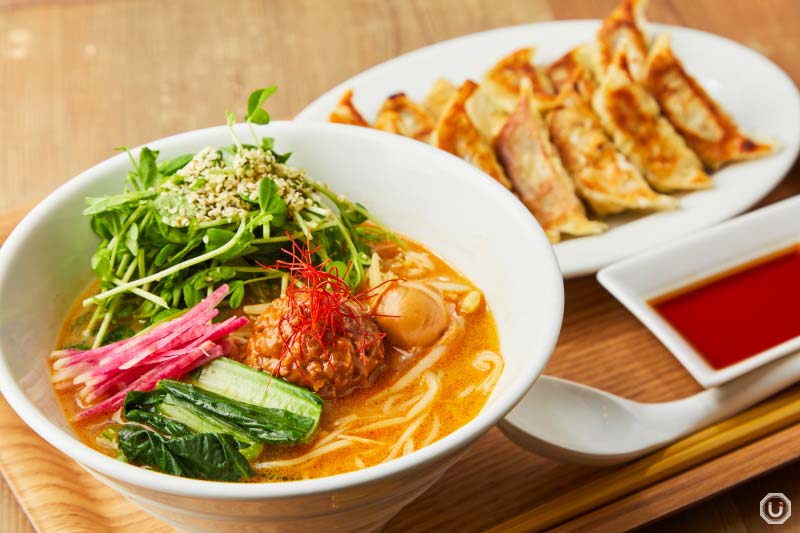
“T’s Set Golden Sesame Tantan + Vegetable Gyoza (12 pcs)” at “T’s TANTAN ecute Ueno”
At casual diners and Chinese restaurants, gyoza are served as mains or sides and pair beautifully with rice. Some places even create gyoza rice bowls that highlight the combination.
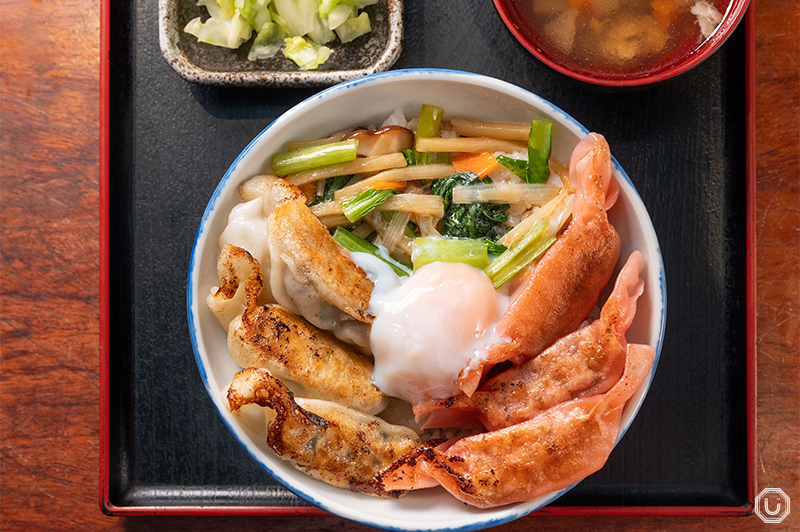
Mega Gyoza Rice Bowl at “Dagashiya”
At gyoza specialty shops you can compare many kinds side by side and experience the depth of the category.
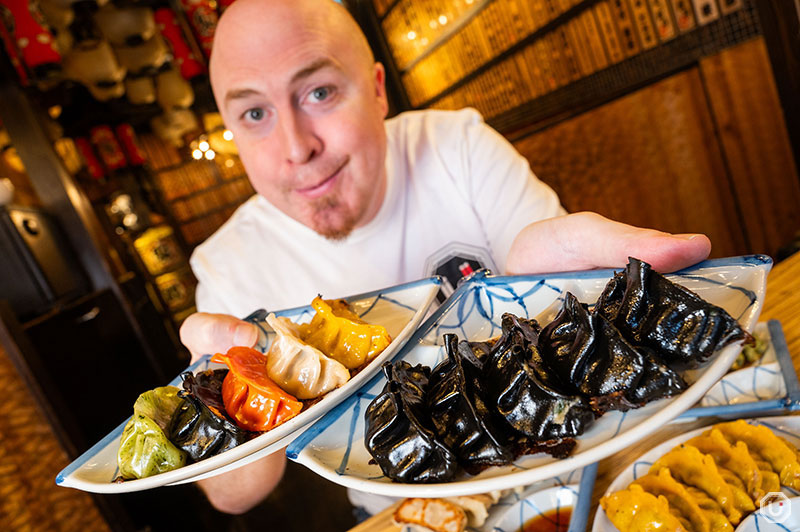
Variety of gyoza dishes offered at “Shinjuku Kakekomi Gyoza”
Enjoying texture and aroma
Start by taking in the aroma, then pay attention to texture. With yaki-gyoza, enjoy the contrast between the crisp, toasted bottom and the soft, steamed top. The burst of juices—along with the fragrance of garlic and chives—is the heart of the experience.
Tasting several styles side by side reveals each one’s traits. Comparing cooking methods and fillings is one of the best ways to understand gyoza more deeply.
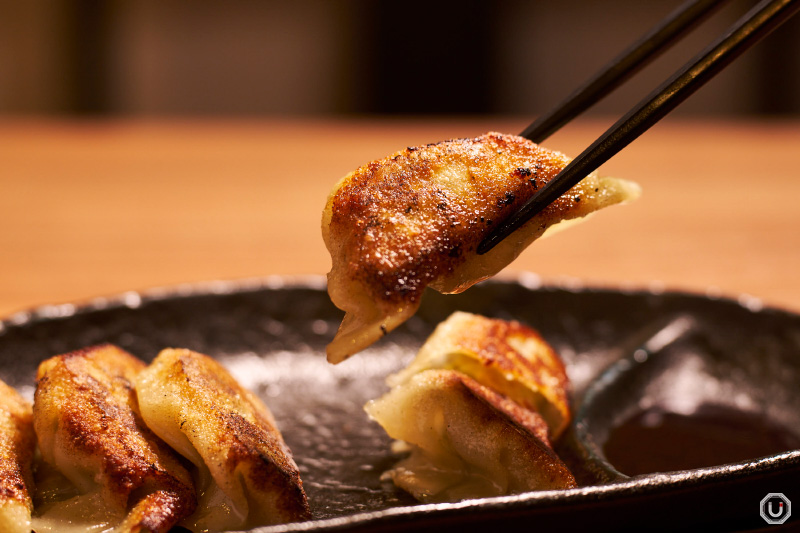
“Halal Gyoza” at “Halal ramen & dining Honolu Ebisu”
Gyoza experiences for travelers
When visiting Japan, gyoza offer a gateway to local food culture. Beyond simply eating them, approaching gyoza from different angles makes for a deeper experience.
Gyoza tasting walks
By sampling pan-fried, steamed, and deep-fried gyoza as you walk from shop to shop, you can experience the category’s diversity with all five senses. Even within the same area, flavor and texture vary by shop, so visiting several and comparing is part of the fun.
At specialty shops you can learn about each owner’s approach and unique techniques, while long-standing, much-loved restaurants offer the traditional flavors they’ve honed over many years.
Pairing gyoza with sake and beer
Gyoza pair exceptionally well with Japanese drinks, especially beer. The roasted notes and richness match beautifully with a crisp lager. Sake pairings are also popular; soy-based dips and sake’s umami harmonize for deeper flavor.
At izakaya you can explore many pairings and experience Japanese drinking culture firsthand—often while striking up conversations with locals over plates of gyoza.
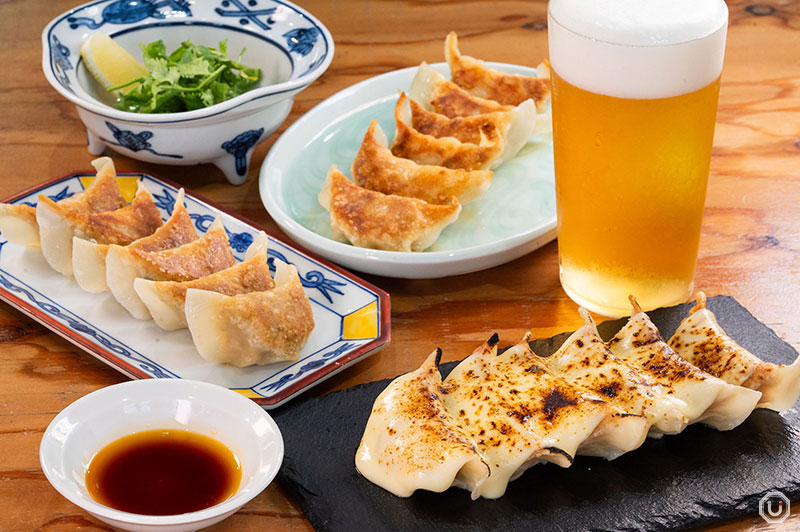
At “KITTAN GYOZA,” enjoy their signature gyoza—best paired with an ice-cold draft beer!
Touring regional-brand gyoza
Distinct gyoza cultures have developed across Japan, making tours of regional-brand gyoza especially appealing. From Utsunomiya and Hamamatsu to Fukushima and Hakata, each area has its own style. Many regions also hold gyoza festivals and themed events where you can experience local food culture more deeply.
Traveling through these regional styles is an ideal way to understand Japan’s diversity. Experiencing the flavors and techniques nurtured in each place brings the richness of Japanese cuisine to life.

Umami Bites writer enjoying Hakata Iron Plate Gyoza and draft beer at “Kyūshū Nechūya Ueno LIVE”
Summary
Originating in China yet evolving uniquely in Japan, gyoza have become an essential part of everyday dining. Pan-fried, steamed, boiled, and deep-fried methods each offer distinct textures and flavors.
From the classic pork-and-vegetable filling to inventive modern versions, variety abounds. Mixing soy sauce, vinegar, and chili oil for dipping adds even more dimension. With regional styles across the country, gyoza are a compelling way to experience Japan’s culinary diversity—and a must-try for visitors.
What Are Gyoza? | Types, Features, and the Right Way to Eat Them
